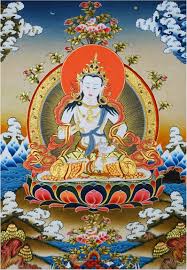Possible Origins of the Tantras
by Tadeusz Skorupski
The earliest evidence for the existence of texts with a tantric flavor is frequently sought in the texts of Indian Mahāyāna literature that have sections containing magical formulas. The presence of these formulas, spells and incantations, endowed with certain efficacious powers for the achievement of both worldly and supramundane results, is attested in all periods and forms of Buddhism. However, it is in the late Mahāyāna that such texts began to acquire an important position and serve as inspirations for various practices distinctly different from those of the traditional Mahāyāna. It is not so much the literary genre of the magical texts as such that should be seen as the precursor of tantric texts proper, but rather their spirit and tendency towards magic and occult practices. The exact time, place, and circumstances in which the first tantric texts were produced remain fundamentally unresolved. There exists much speculation and a variety of opinions on the origin of the tantras. It is, however, generally assumed and supported by Tibetan sources such as Tāranātha that the tantric texts and practices initially remained a very closely guarded secret in limited circles for several centuries, most likely as an oral transmission, before they became diffused and more readily acceptable to a wider audience of adepts in the eighth-ninth centuries. Such an assumption is further supported by the fact that it was also during that period that numerous commentaries on the tantras were written and their authors named.
Tibet was more spiritually inclined toward the tantric tradition than China or Japan, countries in which only selected tantric texts[page 99] were translated and practiced. The Tibetan tradition received the largest collection of tantric texts and practices, becoming thus the most prominent inheritor in Asia of tantric literature produced in India. A great variety of tantric texts and practices were carried over to Tibet, some surviving both as texts and living traditions, and some only as literary documents. There still continue to exist some salient disagreements in interpretation and precise grading of those texts within individual schools and among the different schools.8
Notes
[8] Although Tibetan Buddhism inherited the largest collection of tantric texts, and despite being permeated by tantric theories and practices, it does not imply that the tantras were accepted without any reservations. See for instance Karmay: 150-162 and note 6 above.
